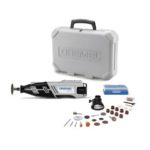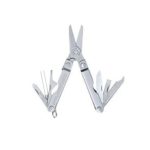A jointer is a woodworking machine that is used to create straight edges on boards. It does this by removing small amounts of material from the board until it is perfectly straight. This is an essential tool for any woodworker, as it allows you to create clean and smooth joints between boards.
In this blog post, we will discuss the basics of using a jointer and show you how to get the most out of this versatile tool.
Do I Need a Jointer?
The short answer is: yes, you need a jointer. Even if you are just starting out in woodworking, a jointer is an essential tool that you will need to have in your workshop.
Why?
Because a jointer allows you to create straight edges on boards, which is essential for creating clean and smooth joints between boards. In addition, a jointer can also be used to straighten boards that are warped or bowed.
How Do I Use a Jointer?
In order to use a jointer, you first need to place the board that you want to joint on the bed of the machine. Make sure that the board is positioned so that the jointer will cut across any knots or defects in the wood.
Once you have positioned your board, you can turn on the machine and slowly push it through the cutter head. As always, be sure to wear all appropriate safety equipment when using power tools!
How Do I Know When My Jointer Is Ready For Use?
There are several ways to tell if your jointer is ready for use. First, you can look at the table and check if there are any gaps between it and the blade. If this gap is greater than 0.008 inches, you need to adjust your machine so that it cuts deeper into the wood. If you do not know how to do this, please consult your owner’s manual.
Another way to tell if your jointer is ready for use is by looking at the end of cutters on both sides of the blade. If they are not even with each other, you need to adjust them until they match up perfectly before using your machine again!
How Can I Get the Most Out of My Jointer?
Here are a few tips to help you get the most out of your jointer:
- Make sure that you always use sharp blades. Dull blades will not produce clean cuts, and can damage your boards.
- Always use a push stick when jointing boards. This will help to keep your hands safe and will also ensure that the board is being fed through the machine at a consistent rate.
- If you are jointing a board that is longer than the bed of your jointer, you can joint it in two or more passes. Make sure to check the alignment of the board after each pass, and re-position the board if necessary before continuing.
This will ensure that it does not get out of alignment as you joint it further down towards one end or another.
What Are The Differences Between Bench, Stationary and Portable Jointers?
Bench jointers are small machines that can be placed on top of a workbench, while stationary and portable jointers are larger machines that need their own dedicated space in your workshop.
A bench jointer can only joint boards that are shorter than its bed, while stationary and portable jointers can joint boards of any length.
Bench jointers have a lower capacity for producing straight edges on lumber due to their size and weight limitations. Stationary and portable jointers are more powerful machines that can handle larger pieces of wood at once without getting bogged down by their weight.
What Is The Best Way To Store A Jointer?
The best way to store a jointer is in its own dedicated space. This will help keep it safe from dust and debris that could damage the machine if left unattended for long periods of time without being used regularly (such as when not in use during winter months).
In addition, it also allows for easy access when needed so that you don’t have to go digging through your garage or basement looking for things before beginning a project.
What Is The Best Way To Clean A Jointer?
The best way to clean a jointer is with compressed air. This will help remove any dust and debris that may have settled on the machine during storage or while in use.
In addition, you should also wipe down any surfaces with a damp cloth to remove fingerprints or other marks left behind by your hands after each use (and before storage).
What Are The Most Common Problems With Jointers?
One of the most common problems with jointers is that they can become dull over time if not maintained properly. This will reduce their ability to joint boards accurately and may even cause damage to the machine itself due to excessive wear on its blades or other parts.
Another problem that can occur is when your jointer starts acting up while in use (such as turning off without warning). This could indicate a problem with the motor or other electrical components of the machine, so it is important to check these before continuing use.
How Often Should I Hone My Jointer Blades?
You should hone your jointer blades whenever they start to get dull. This will ensure that your boards are straight and cleanly cut, and will also help to extend the life of your blades.
You can use a honing guide to keep your blade at the correct angle while you are sharpening it.
What Other Types Of Equipment Do I Need In My Workshop?
In order to use a jointer, you will need to have a workbench available for it. This should be large enough that you can set up your project without having anything obstructing your view or getting in the way of where you want to place the board being worked on (this means making sure there is no furniture nearby).
In addition, it may also be necessary to have a dust collector or shop vacuum available to keep the workshop clean and free of debris.





